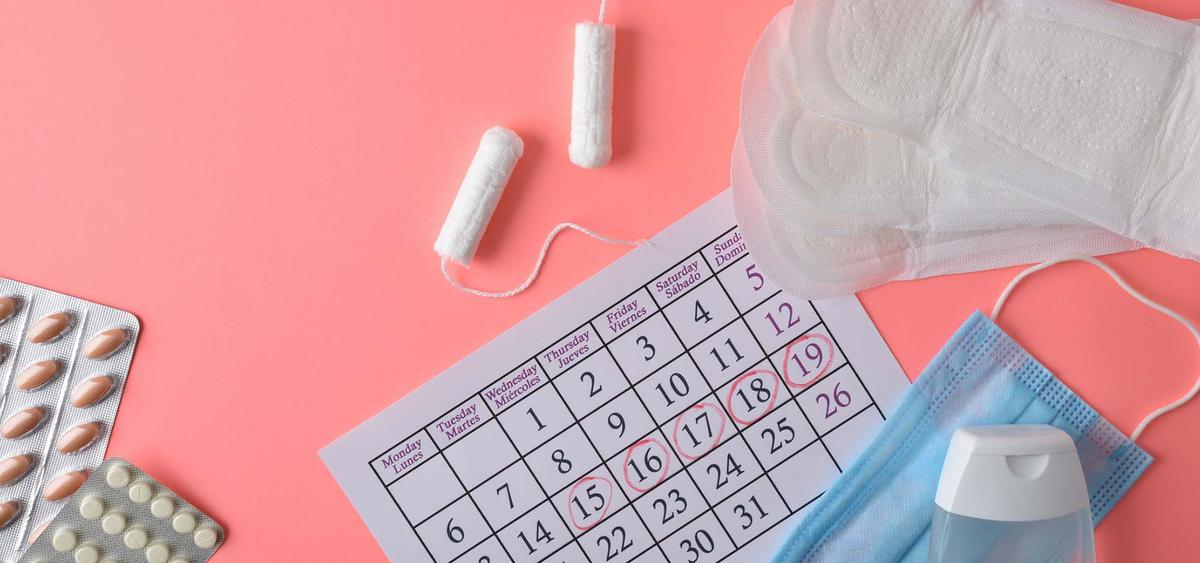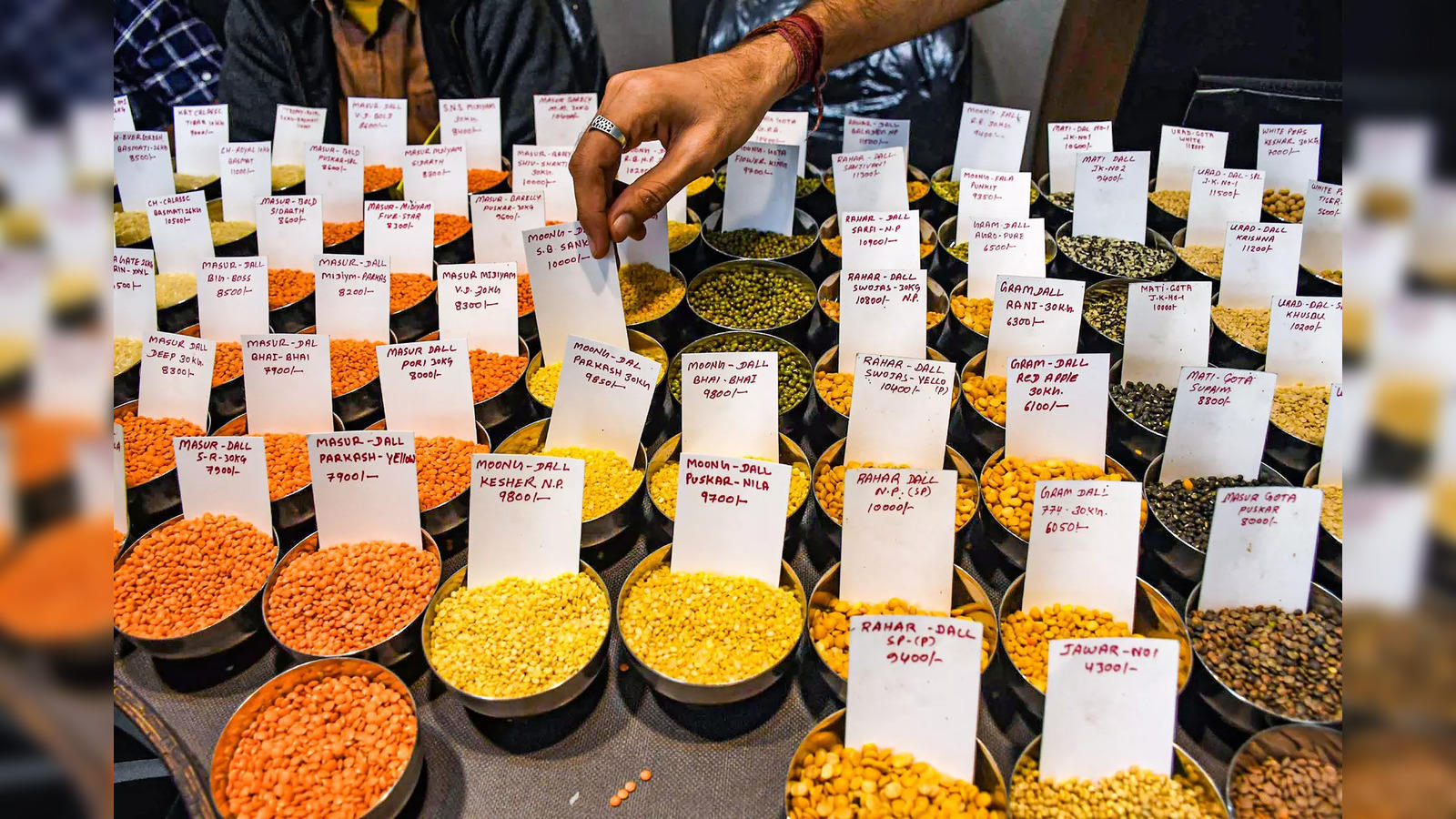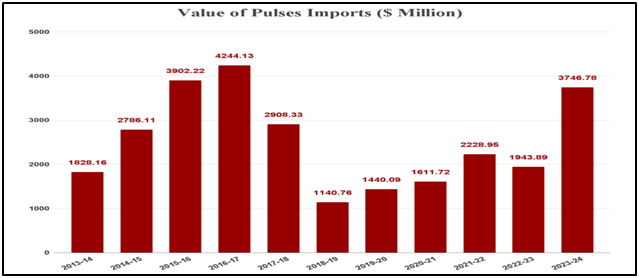Editorials & Articles : 28 May 2024
Rising heat stress in six metros – Study

Why in news?
- According to a study by Delhi-based Centre for Science and Environment, India’s megacities of Delhi, Mumbai, Chennai, Bengaluru, Kolkata and Hyderabad are experiencing worsening heat stress. This is due to a trend of rising relative humidity over the past two decades. The study also pointed out that these cities are also experiencing warmer nights due to urban heat island effect.
What’s in today’s article?
- Heat Stress
- Urban heat island effect
- Key highlights of the study
Heat Stress
- About
- Heat stress occurs when the body cannot get rid of excess heat. When this happens, the body’s core temperature rises and the heart rate increases.
- Basically, it refers to the physiological stress experienced by the body when exposed to excessive heat, particularly in high-temperature environments.
- Causes
- High ambient temperatures
- High humidity levels, which reduce the body’s ability to cool through sweating
- Physical exertion, especially in hot conditions
- Inadequate hydration
- Poor ventilation in workspaces or living environments
- Symptoms
- As the body continues to store heat, the person begins to lose concentration and has difficulty focusing on a task, may become irritable or sick, and often loses the desire to drink.
- The next stage is most often fainting and even death if the person is not cooled down.
Urban heat island (UHI) effect
- About
- UHI effect refers to the phenomenon where urban areas experience significantly higher temperatures than their rural surroundings.
- This temperature difference is primarily due to human activities and the specific characteristics of urban environments.
- Causes
- Surface Characteristics: Urban areas have more asphalt, concrete, and buildings that absorb and retain heat, unlike rural areas with vegetation that provide cooling through
- Heat Generated by Human Activities: Industrial processes, vehicles, air conditioning units, and other machinery generate heat.
- Reduced Vegetation: Less green space and fewer trees mean less shading and cooling from plants.
- Building Density: Tall buildings and narrow streets can trap heat and reduce airflow, limiting cooling.
- Waste Heat: Energy consumption for lighting, heating, and cooling buildings releases additional heat.
- Mitigation Strategies
- Increased Vegetation: Planting trees and creating green spaces
- Cool Roofs and Pavements: Using materials that reflect more sunlight and absorb less heat.
- Green Roofs: Installing vegetation on rooftops can provide insulation and reduce heat absorption.
- Urban Planning: Designing cities to include more parks, green belts, and open spaces can improve airflow and reduce temperatures.
- Improving Energy Efficiency of buildings.
Key highlights of the study
- Megacities are experiencing worsening heat stress
- This is due to a trend of rising relative humidity over the past two decades.
- With the exception of Bengaluru, all the other metros have seen a 5-10 per cent rise in average relative humidity during summer.
- This is due to a trend of rising relative humidity over the past two decades.
- Impact of high heat and humidity on human body
- The combination of high heat and humidity can compromise the human body’s main cooling mechanism: sweating.
- The evaporation of sweat from skin cools our bodies, but higher humidity levels limit this natural cooling.
- Urban heat island effect impacting the night temperature
- These cities are also experiencing warmer nights as land surface temperatures are not falling at the same rate as a decade ago.
- Hot nights are as dangerous as mid-day peak temperatures. People get little chance to recover from day-time heat if temperatures remain high overnight.
- Factors leading to increase in the heat index and heat stress
- The combination of rising air and land surface temperatures and high relative humidity is increasing the heat index and heat stress in these cities.
- Heat index is a measure of discomfort felt due to high heat and humidity.
- The combination of rising air and land surface temperatures and high relative humidity is increasing the heat index and heat stress in these cities.
- Monsoon period has become hotter
- The monsoon period has become hotter in Delhi, Mumbai and Kolkata, while in Chennai, the marginal cooling during monsoon has disappeared.
- In Bengaluru and Hyderabad, the monsoon was still a bit cooler than pre-monsoon.
Importance of this study
- To develop a comprehensive heat management plan for urban centres, an assessment of heat trends is necessary.
- To protect public health: This will help in implementing emergency measures during heatwaves.
- To develop longer term strategies to mitigate heat by increasing green areas and waterbodies, improving thermal comfort in buildings, and reducing waste heat from vehicles, air conditioners and industries.
Tiny satellite to measure heat lost from Earth’s poles

Why in news?
- Recently, the National Aeronautics and Space Administration (NASA) launched one of the two climate satellites, which would study heat emissions at Earth’s poles. The second satellite will be launched in the following days.
- The mission to study the poles has been named PREFIRE (Polar Radiant Energy in the Far-InfraRed Experiment).
What’s in today’s article?
- Significance of measuring heat emissions at Earth’s poles
- CubeSats
- PREFIRE (Polar Radiant Energy in the Far-InfraRed Experiment) Mission
Significance of measuring heat emissions at Earth’s poles
- To analyse Earth’s energy budget
- The Earth’s energy budget is the balance between the amount of heat incoming to Earth from the Sun and the amount of heat outgoing from Earth into space.
- The difference between the two determines the planet’s temperature and climate.
- Currently no way to measure heat radiated from the Arctic and Antarctica
- A large amount of the heat radiated from the Arctic and Antarctica is emitted as far-infrared radiation.
- Far-infrared radiations are wavelengths of 3-1,000 μm within the infrared range of electromagnetic radiation.
- However, there is currently no way to measure this type of energy. As a result, there is a gap in knowledge about the planet’s energy budget.
- A large amount of the heat radiated from the Arctic and Antarctica is emitted as far-infrared radiation.
CubeSats
- Overview
- CubeSats are miniature satellites with a basic design consisting of a 10 cm x 10 cm x 10 cm cube, known as “one unit” or “1U.”
- Each unit weighs no more than 1.33 kg.
- As per NASA, depending on their mission, CubeSats can be configured in various sizes, including 1.5, 2, 3, 6, and 12U.
- Origins and Development
- CubeSats were first developed in 1999 by California Polytechnic State University and Stanford University as educational tools.
- Their low cost and reduced mass compared to traditional satellites made them attractive for technology demonstrations, scientific research, and commercial purposes.
- PREFIRE Mission CubeSats
- Each PREFIRE satellite is a 6U CubeSat, measuring approximately 90 cm in height and nearly 120 cm in width when the solar panels are deployed.
- These panels provide the necessary power for the satellite’s operations.
- Each PREFIRE satellite is a 6U CubeSat, measuring approximately 90 cm in height and nearly 120 cm in width when the solar panels are deployed.
- Difference from SmallSats
- Small spacecraft (SmallSats) focus on spacecraft with a mass less than 180 kilograms and about the size of a large kitchen fridge.
- Even with small spacecraft, there is a large variety of size and mass that can be differentiated.
- Minisatellite, 100-180 kilograms
- Microsatellite, 10-100 kilograms
- Nanosatellite, 1-10 kilograms
- Picosatellite, 0.01-1 kilograms
- Femtosatellite, 0.001-0.01 kilograms
PREFIRE mission
- Mission Objectives
- The two PREFIRE satellites will be placed in a near-polar orbit at an altitude of about 525 kilometers.
- Their mission is to measure the amount of heat radiated into space by the Arctic and Antarctica, helping scientists understand how this radiation influences the planet’s climate.
- Mission overview
- Basically, this mission aims to study far-infrared radiation from Earth’s poles using two CubeSats.
- The CubeSats will also measure the amount of far-infrared radiation trapped by atmospheric water vapour and clouds at the poles and how this influences the greenhouse effect in the region.
- Equipment and Technology
- Each PREFIRE CubeSat is equipped with a Thermal Infrared Spectrometer (TIRS).
- This instrument measures the amount of infrared and far-infrared radiation emitted from the Arctic and Antarctica.
- The spectrometer features specially shaped mirrors and detectors designed to split and measure infrared light, providing detailed data for analysis.
- Importance of the Mission
- Their observations will help us understand the fundamentals of Earth’s heat balance, allowing us to better predict how our ice, seas, and weather.
Menstrual Hygiene in Indian Prisons

What’s in Today’s Article?
- Background
- About Menstrual Hygiene (Meaning, Status in Indian Prisons, Initiatives by Govt, Way Ahead)
Background:
- India has made significant progress in menstrual hygiene management.
- The National Family Health Survey (NFHS 2019-2020) shows that around 80% of young women aged 15-24 now use safe menstrual products.
- However, while urban areas and certain groups have seen improvements, women in Indian prisons remain neglected.
- In a society that often denies prisoners basic rights, female prisoners suffer more due to societal biases that refuse to accept women can commit crimes.
- This has led to their basic needs, like menstrual hygiene, being overlooked.
What is the Meaning of Menstrual Hygiene?
- Menstrual Health and Hygiene (MHH) is essential to the well-being and empowerment of women and adolescent girls.
- On any given day, more than 300 million women worldwide are menstruating.
- In total, an estimated 500 million lack access to menstrual products and adequate facilities for menstrual hygiene management (MHM).
- To effectively manage their menstruation, girls and women require:
- Access to water, sanitation and hygiene (WASH) facilities,
- Affordable and appropriate menstrual hygiene materials,
- Information on good practices, and
- Supportive environment where they can manage menstruation without embarrassment or stigma.
Status of Menstrual Hygiene in Indian Prisons:
- There are 23,772 women in Indian prisons, with 77% in the reproductive age group and likely to menstruate regularly.
- However, the availability and quality of sanitary napkins in prisons are inconsistent and often inadequate.
- Despite the 2016 Model Prison Manual’s recommendations, many states haven’t provided sufficient water and washroom facilities for female prisoners.
- Overcrowding and poor conditions make it difficult for women to access essentials like water, sanitary napkins, detergent, and soap during menstruation.
- A 2023 study conducted in a Maharashtra prison revealed that water, sanitation, and hygiene facilities are inadequate, forcing women to store water and share limited toilets.
- This situation led to higher instances of urinary infections and difficulties in maintaining menstrual hygiene.
- Prisons rely on NGOs for sanitary napkin donations, often resulting in substandard products.
- In one case, only one pair of reusable napkins was provided per woman, which was impractical due to limited access to water and detergent.
Measures Taken by the Government:
- India has been working to improve menstrual hygiene access, particularly for young women, through initiatives like the Menstrual Hygiene Scheme, which distributes free or subsidized sanitary napkins.
- Additionally, affordable Suraksha Suvidha Napkins are available at Jan Aushadhi Kendras for ₹1 each.
- In 2023, India introduced the ‘National Menstrual Hygiene Policy‘ to recognize menstruation as a natural process needing more attention, emphasizing equity in safe and dignified menstrual hygiene management for all, regardless of socioeconomic status or location.
- The policy acknowledges prisoners as a group with limited access to menstrual hygiene.
- However, it lacks a specific action plan to address this issue and does not involve the Ministry of Home Affairs, which is crucial for prison-related matters.
Way Ahead:
- The Indian government must ensure basic menstrual hygiene standards for women in prisons.
- The inconsistent implementation of the Model Prison Manual 2016 across states needs immediate action, with every state required to follow its recommendations.
- Addressing menstrual hygiene in prisons should be seen through a public health perspective as part of combating ‘period poverty.’
- Public health authorities and prison administrators should collaborate to develop a comprehensive strategy for providing adequate menstrual hygiene products and facilities, prioritizing the health and dignity of incarcerated women.
- Additionally, there is a need for research to understand the current state of menstrual hygiene in prisons.
Cause and Effect of the Inflation in Pulses in India

Why in News?
- Pulses posted an annual retail inflation of 16.84% in April 2024, making it more painful for the consumers, given the fact that pulses are hardly sold through the public distribution system (PDS).
- Food inflation pressures during an El Niño and election year have undone the nation’s progress toward near pulse self-sufficiency.
What’s in Today’s Article?
- Pulses Production in India
- The Current Prices of Pulses as per the Department of Consumer Affairs
- Cause and Effect of the Inflation in Pulses
- Sign of Relief and Challenges Ahead
Pulses Production in India:
- Pulses are the major sources of protein in the diet and these are grown in all three seasons (Kharif: Arhar, Urad, Moong; Rabi: Gram, Lentil, Pea; Summer: Greengram, Blackgram and Cowpea) in India.
- India, with over 35 Mha pulses cultivation area, is the largest pulses producing country in the world.
- It ranks first in area and production with 37% and 29% respectively. During 2021-22 our productivity at 932 kg/ha, has also increased significantly over the last 5 years.
- The Department of Agriculture & Farmers Welfare is implementing the National Food Security Mission (NFSM)-Pulses.
- It aims to increase production through area expansion and productivity enhancement in all the districts of 28 States and 2 UTs (J&K and Ladakh) of the country.
- In order to increase the productivity potential of pulses crops in the country, the ICAR is undertaking basic and strategic research on these crops.
- Further to ensure remunerative prices to farmers, the Government implements an umbrella scheme PM Annadata Aay Sanrakshan Abhiyan (PM-AASHA).
- It comprises Price Support Scheme (PSS), Price Deficiency Payment Scheme (PDPS) and Private Procurement Stockist Scheme (PPSS).
- It ensures Minimum Support Price (MSP) to farmers for their produce of notified oilseeds, pulses and copra.
The Current Prices of Pulses as per the Department of Consumer Affairs:
- Chana (chickpea): It is the cheapest available pulse at an average all-India modal (most-quoted) price of was Rs 85 per kg on May 23, as against Rs 70 a year ago.
- Arhar/tur (pigeon pea): The corresponding price rise of this has been even more from Rs 120 (a year ago) to Rs 160 per kg now.
- Urad (black gram) and Moong (green gram): The prices have increased from Rs 110 to Rs 120 per kg for both.
- Masoor (red lentil): It is the only pulse whose modal retail price has actually eased from Rs 95 to Rs 90 per kg.
Cause and Effect of the Inflation in Pulses:
- Cause – Decline in domestic pulses production: From 27.30 million tonnes (mt) in 2021-22 and 26.06 mt in 2022-23 to 23.44 mt in 2023-24, as a result of irregular/deficient monsoon caused by El Niño and winter rain.
- Farmers (especially in Karnataka, Maharashtra, Andhra Pradesh and Telangana) planted less area due to irregular/deficient rainfall.
- The two pulses (chana and arhar) to register the highest inflation have both seen sharp output falls.
- Effect – Surge in imports:
- Renewed food inflation pressures have forced the Central government to phase out tariffs and quantitative restrictions (QR) on imports of most pulses.
- As a result, India’s pulses imports – valued at $3.75 billion in 2023-24 (April-March), were the highest since the record $3.90 billion and $4.24 billion of 2015-16 and 2016-17.
- In quantity terms, import of major pulses totaled 4.54 mt in 2023-24, up from 2.37 mt and 2.52 mt in the preceding two fiscals.
- Effect – Reversal of the relative self-sufficiency achieved by the country:
- Domestic pulses production rose from 16.32 mt to 27.30 mt between 2015-16 and 2021-22, as a result of government incentivising farmers to grow pulses.
- These policy measures of incentivising farmers included MSP-based procurement and levying of duties on imports.
- Domestic production further rose with the development of short-duration (50-75 day) chana and moong varieties, which can be grown with little to no irrigation by utilising the remaining soil moisture from prior crops.
- The allowed planting of as many as four crops a year: kharif (post-monsoon), rabi (winter), spring and summer.
Sign of Relief and Challenges Ahead:
- La Niña: According to global climate projections, El Niño is expected to shift into a neutral phase next month, and there’s even a chance of La Niña, which is linked to abundant rainfall in the subcontinent.
- Unstable domestic supply:
- From this year’s crop, the government agencies have procured very little chana, as opposed to 2.13 mt in 2023 and 2.11 mt in 2022.
- Till March 31, 2025, the government has already approved duty-free imports of urad, masoor, desi chana, and arhar/tur.
- Import of cheaper substitutes:
- A less expensive alternative to chana are yellow/ white peas, which can be imported for between Rs 40 and Rs 41 per kg.
- Similarly, masoor dal is replacing arhar or tur in many eateries to make sambar.
- Imports of these pulses from Russia, Australia and Canada, are anticipated to increase more than urad and arhar/tur from East Africa and Myanmar.





